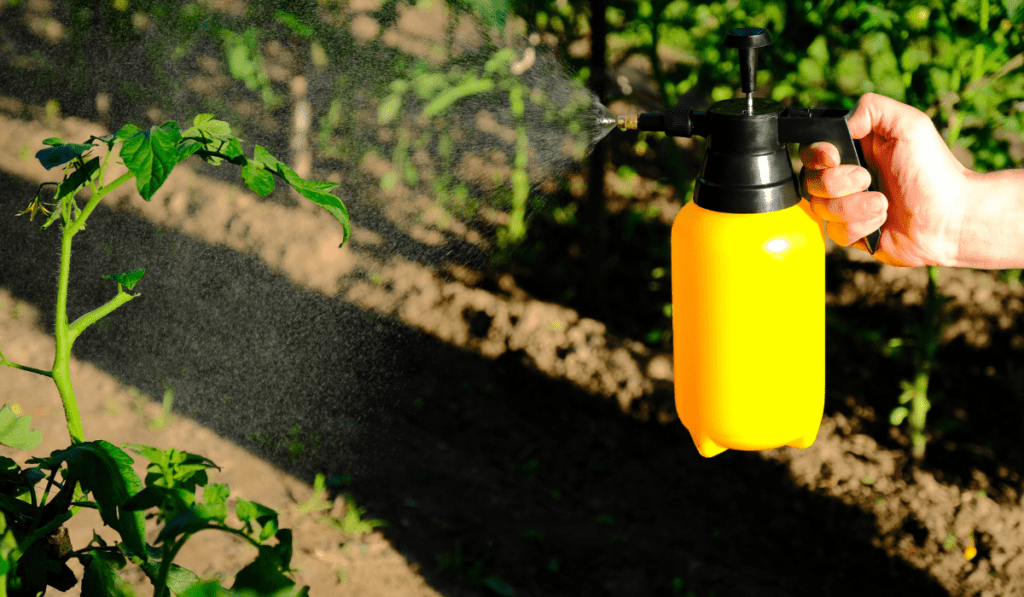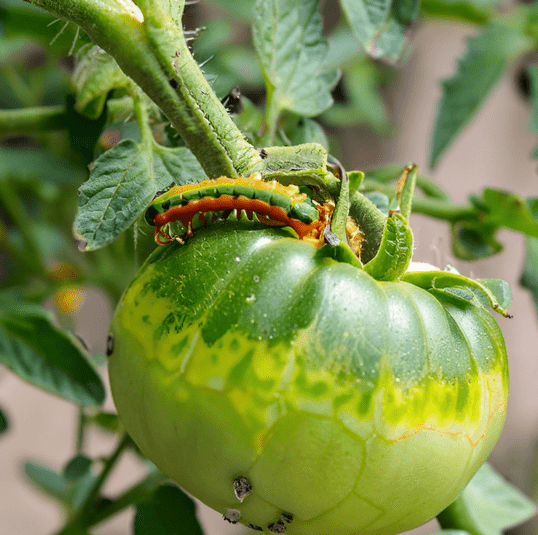Welcome to the world of tomato gardening! In this guide, we’ll explore the ten most common tomato plant pests, their identifying features, and effective solutions to protect your precious tomatoes.
Let’s dive into the world of pest management and ensure your tomato patch thrives.
Understanding Tomato Plant Pests
Before we tackle specific pests, it’s crucial to grasp the general characteristics of tomato plant pests. These unwelcome visitors can cause damage to your plants, affecting both yield and plant health. Vigilance and early intervention are essential to keep your tomatoes safe.
10 Common Tomato Plant Pests
1. Aphids
- Identification: Aphids are tiny, soft-bodied insects found on tomato leaves, stems, and buds. They come in various colors, including green, yellow, and black.
- Damage: Aphids feed on plant sap, causing leaves to curl, yellow, or distort. They can also transmit plant viruses.
- Solution: To control aphids, use a strong stream of water to dislodge them from plants. Applying insecticidal soap or introducing natural predators like ladybugs can also help.
2. Tomato Hornworm
- Identification: Tomato hornworms are large, green caterpillars with distinctive diagonal white stripes on their sides.
- Damage: These voracious feeders can defoliate tomato plants if left unchecked.
- Solution: Handpick hornworms from plants, use biological controls like parasitic wasps, or apply insecticidal soap.
3. Whiteflies
- Identification: Whiteflies are tiny, white, moth-like insects that gather on the underside of tomato leaves.
- Damage: They feed on plant sap, leading to yellowing leaves and the development of sooty mold.
- Solution: Control whiteflies by using yellow sticky traps, applying insecticidal soap, or introducing natural predators like parasitic wasps.
4. Cutworms
- Identification: Cutworms are larvae that hide in the soil and cut young tomato plants at the base.
- Damage: They can sever young seedlings at the soil line, causing plants to wilt and die.
- Solution: Protect young plants by placing collars around their stems. Handpick cutworms from the soil, or use biological controls if necessary.
5. Spider Mites
- Identification: Spider mites are tiny, red or brown insects that create fine webbing on the undersides of tomato leaves.
- Damage: They feed on plant cells, causing stippling, yellowing leaves, and reduced photosynthesis.
- Solution: Increase humidity around plants, apply neem oil to deter mites, or introduce predatory mites as natural controls.
6. Leaf Miners
- Identification: Leaf miners are small larvae that tunnel between leaf layers, leaving winding trails or “mines” on leaves.
- Damage: Their feeding can distort leaves and reduce plant vigor.
- Solution: Remove affected leaves to reduce the population. Use row covers to prevent adult flies from laying eggs, or introduce parasitic wasps for biological control.
7. Flea Beetles
- Identification: Flea beetles are small, jumping beetles that create tiny holes in tomato leaves.
- Damage: Their feeding results in “shot-hole” damage on leaves.
- Solution: Apply neem oil to deter flea beetles, use row covers as a physical barrier, or introduce natural predators like parasitic nematodes.
8. Tomato Fruitworms
- Identification: Tomato fruitworms are larvae that bore into tomato fruit.
- Damage: They cause unsightly damage to fruit, making them inedible.
- Solution: Handpick fruitworms from affected fruit, use biological controls like parasitic wasps, or apply insecticidal treatments.
9. Stink Bugs
- Identification: Stink bugs are shield-shaped insects that feed on tomato fruit.
- Damage: Their feeding results in deformed or blemished fruit.
- Solution: Handpick stink bugs from plants, apply insecticidal soap, or introduce natural predators like parasitic wasps.
10. Wireworms
- Identification: Wireworms are thin, brown larvae that tunnel into tomato roots.
- Damage: They damage plant roots, causing wilting and stunted growth.
- Solution: Use bait traps to reduce wireworm populations, practice crop rotation to prevent infestations, or apply beneficial nematodes for control.
Integrated Pest Management
When it comes to protecting your tomato plants from pests, an integrated approach is most effective. This holistic strategy combines cultural practices, biological controls, and, when necessary, targeted chemical treatments. By adopting integrated pest management, you can nurture thriving tomato plants in your garden.



